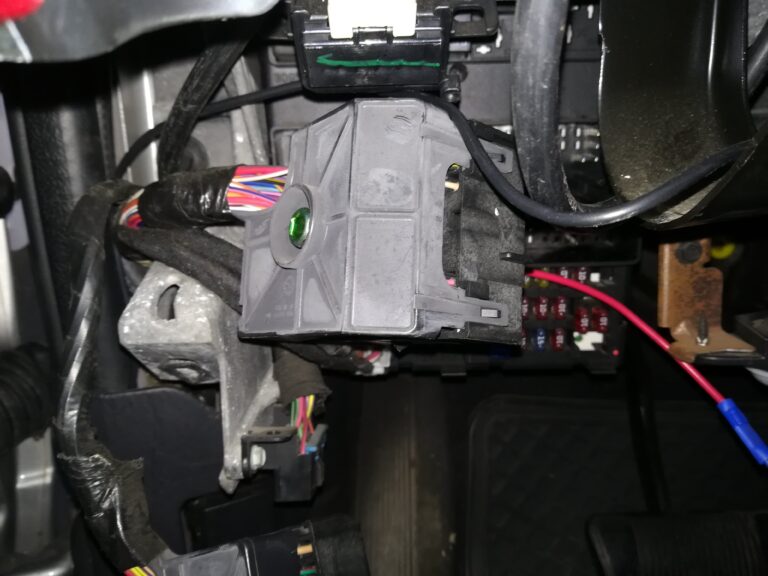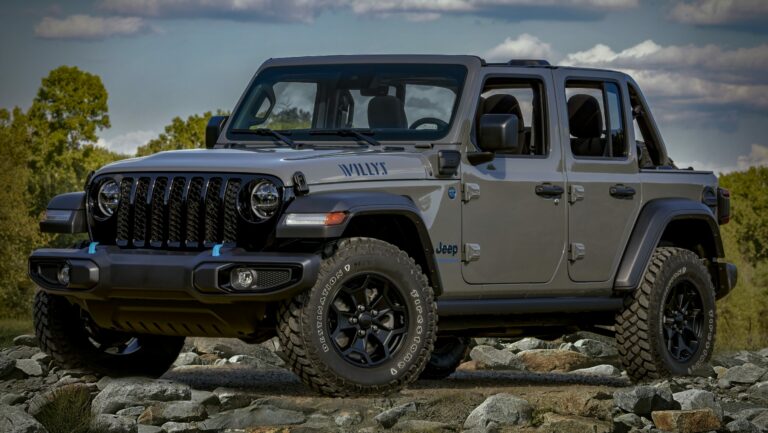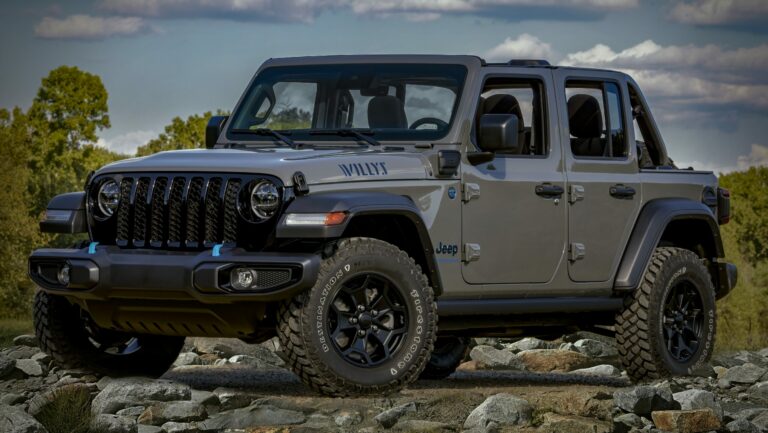Straight Six Jeep Engine For Sale: A Comprehensive Buyer’s Guide
Straight Six Jeep Engine For Sale: A Comprehensive Buyer’s Guide /jeeps.truckstrend.com
Introduction: The Unyielding Heart of a Legend
Few automotive powertrains command the respect and admiration that the straight-six Jeep engine does. For decades, this inline six-cylinder powerhouse has been the quintessential heart of countless Jeep vehicles, from the rugged Cherokee XJ and Grand Cherokee ZJ to the iconic Wrangler YJ and TJ. Known universally for its legendary reliability, incredible low-end torque, straightforward design, and remarkable longevity, the straight-six Jeep engine—particularly the 4.0-liter AMC I6—has cemented its place as one of the most beloved and dependable engines ever produced.
Straight Six Jeep Engine For Sale: A Comprehensive Buyer’s Guide
Despite production ceasing over two decades ago for the 4.0L, the demand for these engines remains incredibly high. Whether you’re a dedicated off-roader needing a robust replacement, a classic Jeep restorer seeking authenticity, or simply someone looking to breathe new life into a cherished vehicle, finding a straight-six Jeep engine for sale is a journey many enthusiasts undertake. This comprehensive guide aims to equip you with the knowledge, insights, and practical advice needed to navigate the market, identify the right engine for your needs, and ensure a successful acquisition and installation.
The Enduring Legacy: Why the Straight Six Jeep Engine?
The enduring popularity of the straight-six Jeep engine is no accident. While several iterations existed, the spotlight often falls on two main variants:
- AMC 4.2L (258 cubic inch) I6: Predecessor to the 4.0L, this carbureted engine was a workhorse found in CJs, YJs, and some XJs from the late 1970s through the late 1980s. It’s known for its immense low-end grunt, though it can be less fuel-efficient and require more tuning than its fuel-injected successor.
- AMC 4.0L (242 cubic inch) I6: This is the undisputed king. Introduced in 1987 with multi-point fuel injection, the 4.0L quickly became renowned for its balance of power (177-190 hp depending on the High Output "HO" or "non-HO" variant), torque (220-235 lb-ft), and bulletproof reliability. Its cast-iron block, robust internals, and simple overhead valve design made it incredibly durable. It powered the Cherokee XJ, Grand Cherokee ZJ/WJ, Wrangler YJ/TJ, and Comanche MJ until 2006.
The reasons for its cult status are manifold:

- Unparalleled Reliability: With proper maintenance, these engines routinely exceed 200,000 to 300,000 miles, and often more.
- Abundant Torque: The long-stroke design provides excellent low-end torque, ideal for off-roading, towing, and general daily driving.
- Simplicity and Maintainability: Its relatively simple design means many repairs can be performed by the average DIY mechanic, and parts are widely available and affordable.
- Aftermarket Support: A massive aftermarket industry exists, offering everything from performance upgrades to heavy-duty replacement components.
- Proven Track Record: Decades of real-world use have proven its mettle in the harshest conditions.

For these reasons, when a Jeep’s original straight-six finally gives up, or a restoration project begins, sourcing another one is often the first and best solution, rather than opting for an engine swap from a different manufacturer.
Understanding Your Needs: New, Remanufactured, or Used?
When searching for a straight-six Jeep engine, you’ll generally encounter three primary categories, each with its own set of pros and cons regarding cost, quality, and peace of mind.

1. New Crate Engines
- Description: These are brand-new engines, often built to original specifications or with minor modern enhancements. They are typically complete, ready to install, and come with a comprehensive warranty.
- Pros: Zero miles, pristine condition, full manufacturer or builder warranty, latest internal component updates, peace of mind.
- Cons: Highest cost, limited availability (especially for engines no longer in production like the 4.0L), may require specific adaptations for older vehicles if not a direct OEM replacement. True "new" 4.0L engines are exceedingly rare; what’s marketed as "new" is often a thoroughly remanufactured unit.
- Best For: Enthusiasts or restorers seeking the absolute best quality and willing to pay a premium for a long-term solution with a strong warranty.
2. Remanufactured/Rebuilt Engines
- Description: These engines have been professionally disassembled, inspected, cleaned, and had all wear components (pistons, rings, bearings, camshaft, valves, seals, gaskets) replaced with new or reconditioned parts. The block and head are machined to factory tolerances. They often come with a warranty.
- Pros: Cost-effective compared to "new," significantly more reliable than used engines, typically come with a warranty (often 1-3 years), no unknown history, core charge often applies (you return your old engine).
- Cons: Quality can vary significantly between rebuilders; it’s crucial to choose a reputable supplier. Still more expensive than a used pull-out.
- Best For: Most common choice for those seeking a balance of reliability, cost, and warranty. Ideal for daily drivers or serious off-road builds where dependability is paramount.
3. Used Engines (Salvage/Pull-outs)
- Description: These are engines extracted from donor vehicles, typically from salvage yards or private sellers. Their condition varies wildly, from low-mileage accident victims to high-mileage units on their last legs.
- Pros: Lowest initial cost, immediate availability, can be a quick solution if you find a good one.
- Cons: Unknown history (maintenance, abuse, overheating), no warranty (or very limited), potential for hidden issues (cracks, excessive wear), may require significant reconditioning before installation.
- Best For: Budget-conscious buyers willing to take a risk, or those with the mechanical expertise to thoroughly inspect and potentially rebuild the engine themselves. Can be a good option if you find a running donor vehicle you can personally inspect and test.
Where to Find Your Straight Six Jeep Engine
Locating the right engine requires knowing where to look. Here are the most common avenues:
- Specialized Engine Suppliers: Companies like Fraser Engines, Jasper Engines, or smaller, dedicated Jeep engine builders often specialize in remanufactured units. They typically offer warranties and technical support. This is often the safest bet for remanufactured engines.
- Online Marketplaces:
- eBay: A vast selection of new, remanufactured, and used engines from various sellers. Be diligent with seller ratings, descriptions, and return policies.
- Facebook Marketplace/Groups: Excellent for finding private sellers of used engines. Look for dedicated Jeep enthusiast groups where members might be selling engines or complete donor vehicles. Always exercise caution and arrange for in-person inspection.
- Craigslist: Similar to Facebook Marketplace, great for local finds but requires vigilance against scams and misrepresentations.
- Local Salvage Yards/Auto Recyclers: The go-to for used pull-out engines. You can often inspect the engine in person, and sometimes even see it run (if still in the vehicle). Prices are usually negotiable.
- Jeep Forums & Enthusiast Communities: Websites like JeepForum.com, NAXJA.org (North American XJ Association), or various Wrangler forums often have "for sale" sections where members list engines. This can be a good source for well-maintained used engines from fellow enthusiasts.
- Performance Shops & Off-Road Builders: Some shops that specialize in Jeep builds or engine work may have rebuilt or custom-built engines for sale, or they might know where to source one.
Crucial Considerations Before Buying
Before you hand over your money, a thorough due diligence process is essential.
-
Engine Type & Compatibility:
- 4.0L HO vs. Non-HO: The High Output (HO) 4.0L (1991-2006) offers slightly more power than the non-HO (1987-1990) due to different cylinder heads, intake manifolds, and sensor configurations. While swappable, be aware of the specific year and model your Jeep needs to ensure sensor compatibility (e.g., crank position sensor location changed).
- 4.2L (258ci): If you’re replacing a 4.2L, sticking with another 4.2L is easiest. Swapping to a 4.0L involves significant modifications to fuel, ignition, and often the transmission bellhousing.
- Year-Specific Quirks: Even within the 4.0L, there were minor changes over the years (e.g., sensor locations, accessory mounting points). Try to match the engine year as closely as possible to your vehicle’s year to minimize headaches.
-
Condition Assessment (for Used Engines):
- Visual Inspection: Look for significant oil leaks, excessive corrosion, cracks in the block or cylinder head (especially around the exhaust manifold bolts for 4.0Ls), signs of overheating (discolored paint, warped components), and external damage.
- Oil & Coolant: Check the oil for milky consistency (head gasket failure) or excessive sludge under the oil cap. Inspect the coolant for oil contamination or rust.
- Compression Test: If possible, perform a compression test on each cylinder. Low or inconsistent compression is a major red flag.
- Run Test (if in a donor vehicle): Listen for knocking, ticking, excessive smoke from the exhaust (blue for oil, white for coolant, black for fuel issues), and observe oil pressure.
- Mileage: While lower mileage is generally better, a well-maintained high-mileage engine can be better than a neglected low-mileage one. Ask for maintenance records if available.
-
Warranty & Return Policy:
- For new or remanufactured engines, a strong warranty (e.g., 1-3 years, unlimited mileage) is non-negotiable. Understand what it covers and what voids it.
- For used engines, expect "as-is" or a very short, limited warranty (e.g., 30 days for major internal failure).
-
Shipping & Logistics:
- Engine shipping can be expensive and complex due to weight and size. Get a firm shipping quote.
- Discuss crating and insurance. Ensure the engine is properly secured to a pallet to prevent damage during transit.
-
Core Charge:
- Most remanufactured engine suppliers require a "core charge," which is a deposit refunded when you return your old, rebuildable engine. Factor this into your budget. Ensure your old engine is indeed considered a "good core" by the supplier’s standards.
-
Documentation:
- For used engines, ask for the VIN of the donor vehicle. This can help verify mileage (via CarFax/AutoCheck) and ensure it wasn’t from a flood or salvage title vehicle.
Installation & Beyond: What to Expect
Acquiring the engine is just the first step. Budgeting for installation and subsequent maintenance is crucial.
- Professional vs. DIY: Engine swaps are labor-intensive. If you’re not an experienced mechanic with the right tools (engine hoist, stand, transmission jack), consider professional installation. Labor costs can be significant, often equaling or exceeding the engine’s price.
- Associated Costs: Don’t forget new fluids (oil, coolant), gaskets, seals, spark plugs, sensors (crankshaft position sensor, oxygen sensors, throttle position sensor, idle air control valve), hoses, belts, and potentially a new water pump, thermostat, radiator, and exhaust manifold. It’s often wise to replace these wear items while the engine is out.
- Break-in Procedure: For new or remanufactured engines, adhering strictly to the builder’s break-in procedure (varying RPMs, initial oil change) is vital for longevity.
- Common Upgrades/Maintenance: Once installed, consider upgrading fuel injectors (e.g., to 4-hole injectors for better atomization), upgrading the cooling system (higher capacity radiator, better fan clutch), or addressing known issues like exhaust manifold cracks.
Troubleshooting Common Issues (Post-Purchase/Installation)
Even the legendary straight-six isn’t entirely without its common quirks. Being aware of these can help with proactive maintenance and quick diagnosis if issues arise:
- Rear Main Seal (RMS) Leaks: A very common oil leak point. Often not a catastrophic issue but messy. Easy to replace when the engine or transmission is out.
- Exhaust Manifold Cracks: Due to heat cycling, the cast iron manifold is prone to cracking, leading to ticking noises. Aftermarket headers or heavy-duty OEM replacements are available.
- Cooling System Vulnerabilities: While the engine itself is robust, the cooling system (radiator, water pump, thermostat housing) can be a weak point if neglected. Overheating can damage the cylinder head.
- Crankshaft Position Sensor (CPS) Issues: A common cause of no-start or intermittent stalling.
- Valve Cover Gasket Leaks: Another common, albeit minor, oil leak. Easy to replace.
Price Table: Straight Six Jeep 4.0L Engine for Sale (Estimated Ranges)
| Engine Type | Condition | Estimated Price Range (USD) | Warranty | Pros | Cons |
|---|---|---|---|---|---|
| New Crate | Brand New | $4,000 – $6,000+ | 3 years / Unlimited Mi | Pristine, Longest Lifespan, Peace of Mind | Highest Cost, Very Limited Availability |
| Remanufactured | Rebuilt/Refurbished | $2,500 – $4,500 | 1-3 years / Unlimited Mi | Reliable, Cost-Effective, Warranty Included | Quality Varies by Rebuilder, Core Charge |
| Used (Pull-Out) | Used | $500 – $2,000 | Limited (30-90 days) or None | Lowest Initial Cost, Immediate Availability | Unknown History, Potential Hidden Issues, No Warranty |
Note: Prices are estimates and can vary significantly based on mileage, condition, supplier, included accessories (e.g., sensors, intake manifold), and current market demand. Shipping costs are extra.
Frequently Asked Questions (FAQ)
Q1: Which Straight Six Jeep engine is considered the best?
A1: The 4.0L High Output (HO) engine (produced from 1991-2006) is widely regarded as the best due to its robust design, excellent power and torque, reliability, and widespread aftermarket support.
Q2: How long do these engines typically last?
A2: With proper maintenance, 4.0L engines commonly exceed 200,000 miles, with many reaching 300,000 miles or more. Regular oil changes, cooling system maintenance, and addressing minor issues promptly are key.
Q3: Can I swap a 4.0L into a Jeep that originally had a 4.2L (258ci)?
A3: Yes, it’s a popular swap, but it’s not a direct bolt-in. It requires significant modifications, including adapting the fuel system (carbureted to fuel injection), ignition system, potentially the transmission bellhousing, and wiring harness.
Q4: What’s the difference between a "High Output" (HO) and a "Non-HO" 4.0L engine?
A4: The HO (1991-2006) has a slightly different cylinder head design, intake manifold, and cam profile resulting in about 10-15 more horsepower. It also uses a different crank position sensor (mounted on the bellhousing vs. the block for non-HO).
Q5: Is it worth rebuilding my current 4.0L engine instead of buying a replacement?
A5: It depends on the extent of the damage. If the block or cylinder head is cracked beyond repair, or internal components are severely damaged, a replacement might be more cost-effective. If it just needs new rings, bearings, and a valve job, rebuilding can be a good option, especially if you want to perform custom upgrades.
Q6: What should I look for when inspecting a used Straight Six Jeep engine?
A6: Check for signs of oil or coolant leaks, sludge under the oil cap, excessive corrosion, cracks in the block or head, and listen for abnormal noises if it can be run. A compression test is highly recommended.
Q7: Are parts still available for these older engines?
A7: Absolutely. Due to their popularity, the aftermarket support for the 4.0L and 4.2L engines is excellent. Most common wear parts, as well as performance upgrades, are readily available.
Conclusion: Investing in Enduring Performance
The straight-six Jeep engine, particularly the legendary 4.0L, is more than just a piece of machinery; it’s a testament to robust engineering and a symbol of Jeep’s go-anywhere spirit. Whether you opt for a pristine remanufactured unit or take a calculated risk on a well-vetted used engine, the investment in a replacement straight-six breathes new life into your beloved Jeep, ensuring many more years of dependable service and adventurous journeys.
By understanding the different options, diligently researching suppliers, thoroughly inspecting potential purchases, and budgeting for all associated costs, you can confidently navigate the market for a straight-six Jeep engine for sale. The satisfaction of hearing that iconic engine roar to life, ready for the next challenge, is a reward well worth the effort. Choose wisely, maintain diligently, and your straight-six Jeep will continue to be a loyal companion on the road less traveled.





